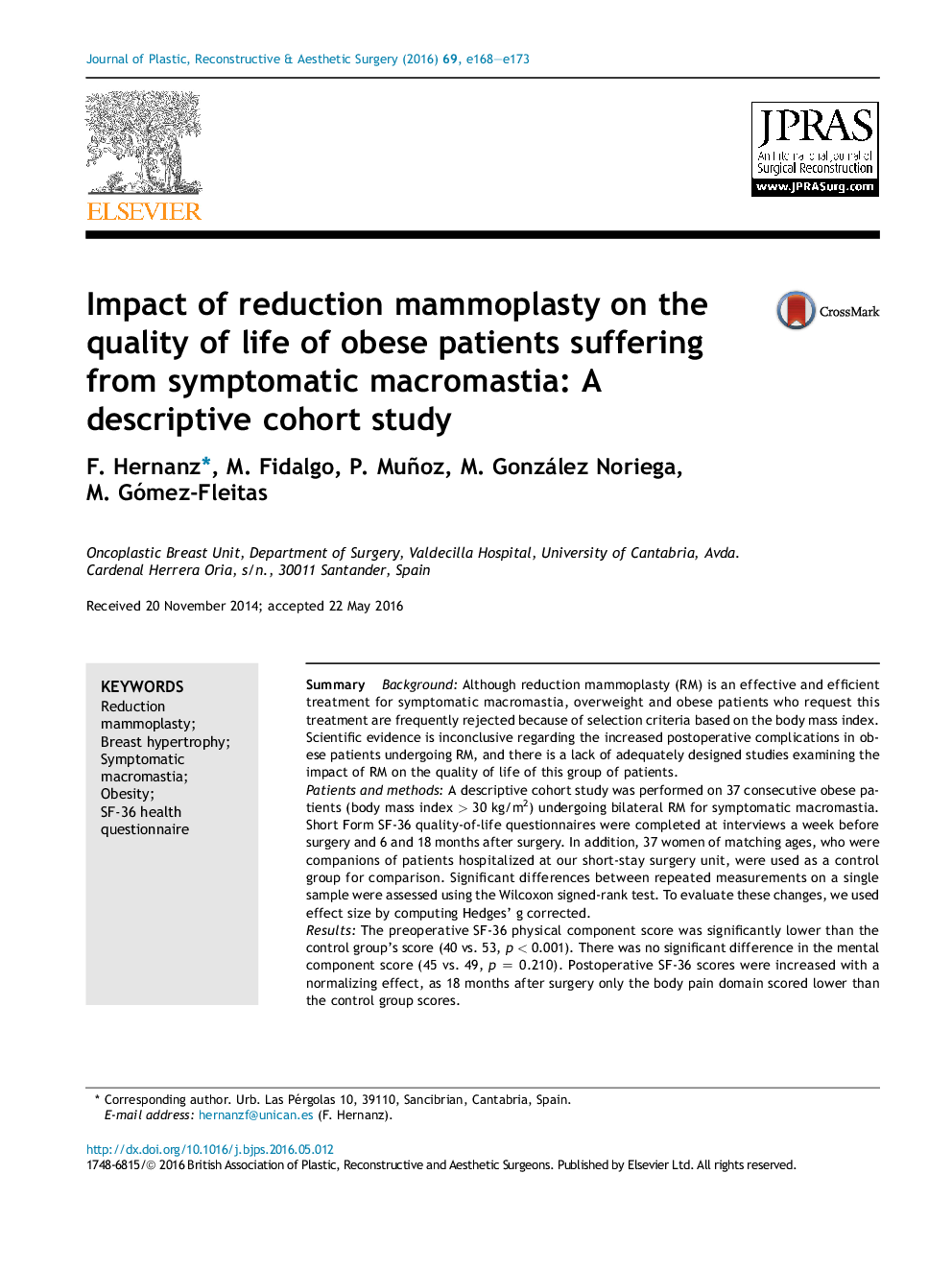| Article ID | Journal | Published Year | Pages | File Type |
|---|---|---|---|---|
| 4117037 | Journal of Plastic, Reconstructive & Aesthetic Surgery | 2016 | 6 Pages |
SummaryBackgroundAlthough reduction mammoplasty (RM) is an effective and efficient treatment for symptomatic macromastia, overweight and obese patients who request this treatment are frequently rejected because of selection criteria based on the body mass index. Scientific evidence is inconclusive regarding the increased postoperative complications in obese patients undergoing RM, and there is a lack of adequately designed studies examining the impact of RM on the quality of life of this group of patients.Patients and methodsA descriptive cohort study was performed on 37 consecutive obese patients (body mass index > 30 kg/m2) undergoing bilateral RM for symptomatic macromastia. Short Form SF-36 quality-of-life questionnaires were completed at interviews a week before surgery and 6 and 18 months after surgery. In addition, 37 women of matching ages, who were companions of patients hospitalized at our short-stay surgery unit, were used as a control group for comparison. Significant differences between repeated measurements on a single sample were assessed using the Wilcoxon signed-rank test. To evaluate these changes, we used effect size by computing Hedges' g corrected.ResultsThe preoperative SF-36 physical component score was significantly lower than the control group's score (40 vs. 53, p < 0.001). There was no significant difference in the mental component score (45 vs. 49, p = 0.210). Postoperative SF-36 scores were increased with a normalizing effect, as 18 months after surgery only the body pain domain scored lower than the control group scores.ConclusionsAccording to our results, obese women with symptomatic macromastia undergoing RM exhibited increased quality of life, and this improvement was maintained over time.Therapy: Level III Evidence.
